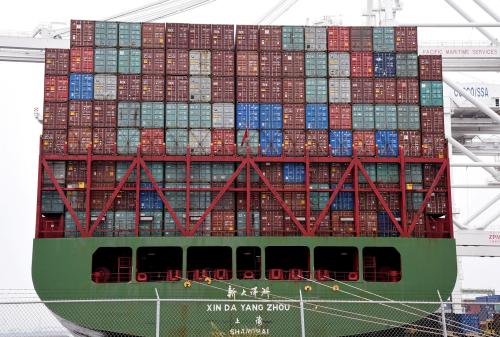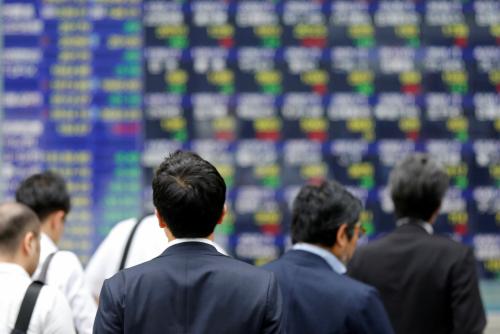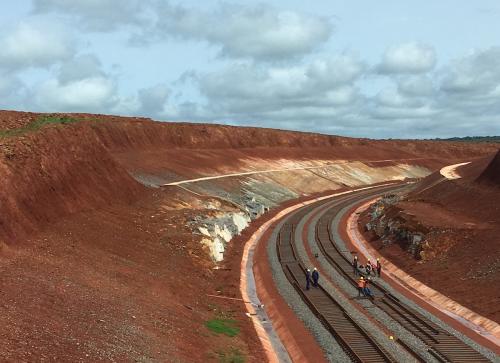In collaboration with the Financial Times (FT), Eswar Prasad and Karim Foda have developed a set of composite indexes which track the global economic recovery. The Tracking Indexes for the Global Economic Recovery (TIGER) is also featured in the Financial Times.
The world economy is facing another moment of bifurcation. Advanced economies are settling into a stable growth trajectory, while many emerging markets are coping with renewed growth challenges and currency depreciation pressures. While conventional growth indicators look relatively healthy for most countries, weakening business and consumer confidence bode poorly for growth prospects in many, especially the major emerging market economies. Investment and productivity growth remain far below levels needed to underpin sustained growth. Progress on reforms has stalled in some countries, exposing them to an array of brewing economic and geopolitical stresses.
Most major advanced economies have locked in positive short-term growth momentum. Both deflationary and inflationary risks appear contained, with core CPI inflation converging to a range of 1-2 percent among these economies and inflation expectations well anchored in this range. Equity markets, especially in the U.S., have taken various economic and geopolitical shocks in stride.
The U.S. economy is in fine fettle, posting impressive growth in GDP and employment. The unemployment rate has fallen to 3.7 percent, but wage and inflationary pressures remain broadly in check. U.S. stock markets continue to perform strongly, reflecting robust growth in corporate earnings bolstered by the corporate tax cut and a more lax regulatory environment. Bond markets appear less sanguine; notwithstanding the recent uptick in bond yields, the relatively flat U.S. Treasury yield curve is worrying.
Click a country name below the Composite Index to view charts for the main TIGER indexes by country and charts for the indicators that make up the indexes, which are broken down by real activity, financial, and confidence indicators for advanced economies and emerging markets.
In the eurozone overall growth has held steady, despite cooling export growth and wavering business sentiment. A pickup in wage growth has created room for the European Central Bank (ECB) to begin scaling back its balance sheet. Germany’s service sector is in the midst of a robust expansion, partially offsetting slower industrial activity. Other major eurozone economies are also humming along, although a messy Brexit, spillover effects of rising yields on Italian sovereign debt, and trade protectionism could drag down growth in the bloc.
The Japanese economy remains on solid footing. The unemployment rate is below 3 percent and the marked increase in capital expenditures augurs well for long-term growth. But structural reforms to labor markets are still needed, especially in light of Japan’s demographic challenges.
The U.K. economy has maintained good growth momentum, supported by healthy employment growth and service sector expansion. But there are signs that Brexit-related uncertainties are beginning to take a toll on business confidence and investment decisions are being put off.
Emerging market economies have hit a rough patch. As in the past, their domestic and external vulnerabilities tend to get exposed when global financial conditions tighten and the U.S. dollar strengthens. These vulnerabilities include current account deficits, large amounts of foreign currency external debt, and loss of investor confidence due to inept economic policies and political instability. Argentina and Turkey epitomize the sharp shifts in investor sentiment that can maul a country’s currency. Other countries such as Indonesia and South Africa that share some of these vulnerabilities have also been subject to capital flow and currency volatility.
The trade wars and domestic financial imbalances have taken a toll on the Chinese economy, which has lost some growth momentum. Chinese policymakers have so far refrained from aggressively using monetary and fiscal policies to counter the slowdown. Their restraint reflects the difficulty of supporting short-term growth without worsening financial sector and other longer-term risks. The renminbi’s depreciation has offset some of the adverse effects of U.S. tariffs. The People’s Bank of China might be willing to accommodate market pressures for additional gradual depreciation, but is unlikely to actively deploy currency depreciation as a competitive tool for fear of setting off another capital outflow-currency depreciation spiral.
India has solidified its position as the fastest-growing major economy in the world. Despite the economy’s blazing growth, the Indian rupee has depreciated by 15 percent relative to the dollar this year. Rising world oil prices and strong domestic consumer demand have led to a wider current account deficit and stoked concerns about rising inflation, larger budget deficits, and further currency depreciation. One reason India is caught up in the broader emerging market stresses is the postponement of many reforms that are seen as necessary to improve resource allocation and productivity in the economy.
Brazil, which just last year emerged from recession, is once more on the brink due to profligate policies, low productivity growth, and political turmoil. GDP growth remains tepid in Russia despite the boost from rising oil prices.
In recent years, many countries have undertaken important reforms to financial, labor, and product markets, although these have generally fallen short of the deep-rooted reforms necessary to durably bolster productivity and output growth. The limited and incomplete nature of structural reforms in many economies has left them vulnerable to rising financial pressures and macroeconomic stresses.
Advanced economies remain beset by monetary and fiscal overhangs, with public debt levels and central bank balance sheets that have both expanded massively since the crisis hit. Emerging markets remain vulnerable to swings in global investor sentiment and to domestic fragilities that become exposed when global financing conditions tighten.
Policymakers may be left with little room to respond aggressively to a slowdown in growth as the expansionary phase of the global business cycle winds down amid an increase in economic, trade, and geopolitical uncertainties. Yet again, the challenge for national governments is to regain momentum on reforms that would make their economies resilient to shocks and act as building blocks for sustainable and higher-quality economic growth.
Karim Foda is a former associate fellow at the Brookings Institution. Eswar Prasad is a professor at Cornell University and senior fellow at Brookings. Ethan Wu, a student at Cornell, also contributed.






